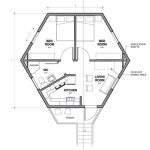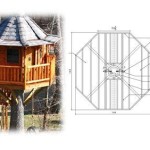Student Housing Plans
Securing suitable housing is a critical aspect of the student experience. A well-chosen housing plan can significantly impact academic performance, social integration, and overall well-being. Understanding the various options available and planning accordingly is essential for a successful academic journey.
Several factors influence student housing choices. Budget constraints often play a primary role, dictating the type and location of accommodation students can afford. Proximity to campus is another key consideration, impacting commute times and accessibility to university resources. Lifestyle preferences, such as the desire for a quiet study environment or a more social atmosphere, also contribute to the decision-making process. Finally, the availability of amenities, including internet access, laundry facilities, and meal plans, can sway student preferences.
On-campus housing options typically include dormitories and residence halls. Dormitories generally offer shared rooms and communal bathrooms, providing a cost-effective solution for students prioritizing affordability and social interaction. Residence halls may offer a wider range of room types, including single or double occupancy with private or shared bathrooms, often at a higher price point. On-campus housing frequently includes meal plans and convenient access to campus facilities, such as libraries, gyms, and computer labs.
Off-campus housing presents a broader spectrum of choices, including apartments, shared houses, and homestays. Apartments offer independent living with varying levels of privacy and amenities, depending on individual budgets and preferences. Shared houses involve multiple students renting a property together, splitting the costs of rent and utilities. This option can be more economical than renting an apartment alone and fosters a sense of community. Homestays provide students with accommodation in a private home, offering a family-like environment and cultural immersion opportunities.
Choosing between on-campus and off-campus housing involves weighing the pros and cons of each option. On-campus living offers convenience, proximity to classes, and built-in social networks. However, it can be less private and potentially more expensive than some off-campus alternatives. Off-campus housing provides greater independence, flexibility, and potentially lower costs, but requires more responsibility in terms of lease agreements, utility management, and commuting arrangements.
Developing a comprehensive housing plan requires careful consideration of several key steps. Firstly, establishing a realistic budget is crucial. Students should factor in rent, utilities, transportation costs, and other living expenses. Secondly, researching available options thoroughly, both on and off campus, helps students understand the market and identify suitable properties. This research should include visiting potential accommodations, attending housing fairs, and utilizing online resources. Thirdly, understanding lease terms and conditions is essential to avoid future complications. Students should carefully review all clauses, including lease duration, payment schedules, and responsibilities for maintenance and repairs.
Safety and security should be paramount when considering student housing options. Students should inquire about security measures in place, such as surveillance systems, secure entry points, and emergency protocols. Choosing well-lit areas and researching the neighborhood’s safety statistics can contribute to peace of mind. Furthermore, ensuring the property meets safety standards, including smoke detectors and fire extinguishers, is crucial.
Transportation logistics play a significant role in the housing decision. Students should evaluate the proximity of public transportation, cycling routes, and parking availability. Commute times to campus and other frequently visited locations should be factored into the overall housing plan. The availability of convenient and affordable transportation options can significantly impact daily routines and overall quality of life.
Building a supportive community within the chosen housing environment can enhance the student experience. Engaging with roommates, neighbors, and resident advisors can foster a sense of belonging and create a positive social network. Participating in residential activities and events can facilitate connections and contribute to a vibrant community atmosphere.
Utilizing available resources can significantly assist students in their housing search and planning process. University housing offices often provide guidance and support in navigating the various options, both on and off campus. Online platforms and student forums can offer valuable insights and peer-to-peer advice. Furthermore, local community resources can provide information on tenant rights and responsibilities.
Planning ahead is crucial for securing desired student housing. Starting the search early, particularly in competitive markets, allows ample time to explore options and make informed decisions. Applying for on-campus housing or securing off-campus leases well in advance of the academic year can alleviate stress and ensure a smooth transition into student life.

2 Bhk Floor Plans Of 25 45 Google Search Student House Four Bedroom

Student Housing Floor Plans Apartment Home Design Hostels

Pin On Student Rooms

Floor Plans Inspiration By Altro

Mccarthy Hall Floor Plans Ku Student Housing

Hamonic Masson Completes Student Housing With A Facade Of Golden Cubes

Le Piagge Student Housing 1 Third Floor With Common Spaces For The Scientific Diagram

Student Housing People S Park
-page-001.jpg?strip=all)
Student Housing C F Møller Archdaily

Student Housing 3d Floor Plans North Dakota








